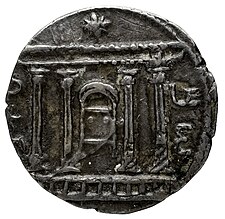
 |
| Part of a series on the |
| Bar Kokhba revolt |
|---|
The Bar Kokhba hiding complexes are underground hideout systems built by Jewish rebels and their communities in Judaea and used during the Bar Kokhba revolt (132–136 CE) against the Roman Empire.[1] The hiding complexes are believed to have played a significant role during the revolt, particularly in Judea proper. Functioning as hiding places during times of emergency, these systems facilitated defense strategies and guerrilla warfare tactics.[2]
By 2005, hiding complexes had been identified in over 100 settlements across Judea, mainly concentrated in the Shephelah, Hebron Hills, and Beit El Mountains,[2] with fewer in Galilee. Most of these complexes were strategically located beneath or near homes in settlements. Some were established in preparation for the revolt, while others were built during its course. A few of these structures, though smaller and less intricate, date back even earlier to the First Jewish–Roman War (66–73 CE).[2]
Carved into living rock – primarily the limestone and chalkstone typical for the region[2] – the complexes comprised interconnected chambers linked by narrow passages, these complexes typically feature entrance shafts, rooms, halls, ventilation shafts, and various amenities such as locking mechanisms, lighting systems, sanitation facilities, and provisions for water storage. This architectural design allowed inhabitants to conceal themselves while maintaining essential functions for survival and warfare.
- ^ Shivti'el, Yinon "Maʻarkhot ha-mistor ba-Galil ha-ʻelyon u-tefutsatan" (in Hebrew).
- ^ a b c d קלונר, עמוס; זיסו, בועז (2005). "מערכות המסתור בארץ יהודה: עדכון ארכיאולוגי וגיאוגרפי של השתרעות מלחמת בר כוכבא". In מור, מנחם; פסטור, ג'ק; רונן, ישראל; אשכנזי, יעקב (eds.). לאוריאל: קובץ מחקרים בתולדות ישראל בעת העתיקה (in Hebrew). ירושלים: מרכז זלמן שזר לתולדות ישראל. p. 125. ISBN 965-227-210-8.
© MMXXIII Rich X Search. We shall prevail. All rights reserved. Rich X Search
